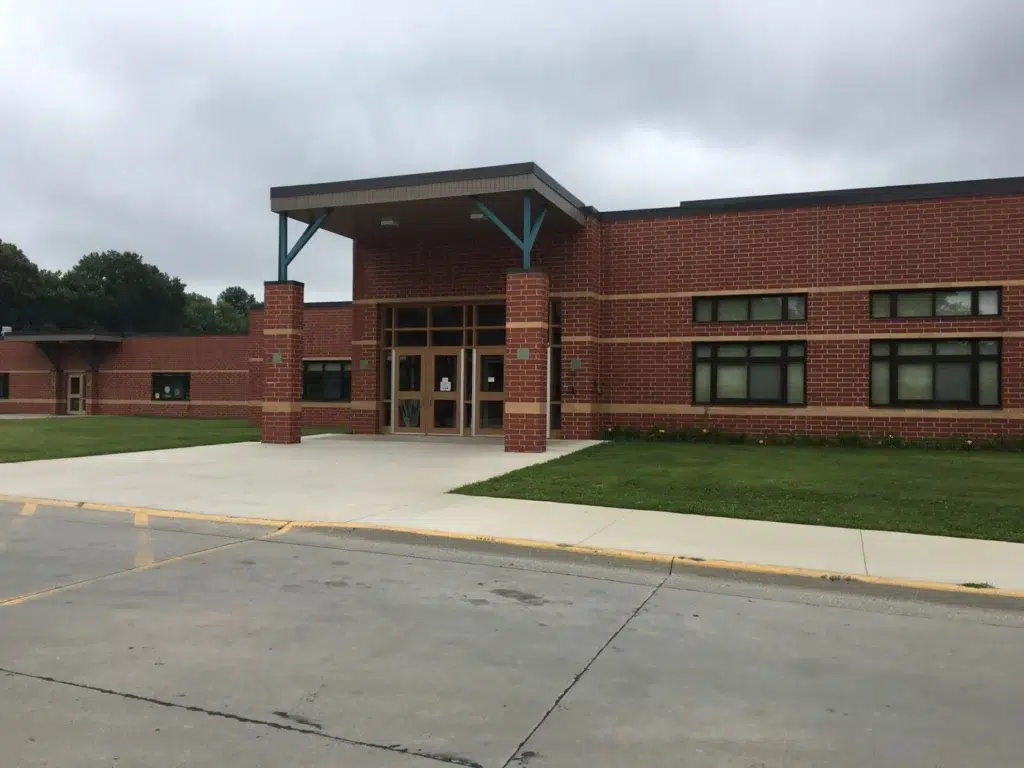Established in 1984 by the National School Safety Center, the focus of school safety week is to “motivate key education and law enforcement policymakers, as well as students, parents and community residents, to vigorously advocate school safety.”
At Pikmykid, school safety is our number one priority. So with school safety week beginning this Sunday, October 16th, we wanted to share some factors to consider around how to make schools safer.
Highlight Kind Behavior
When thinking about school safety, most minds likely think about the physical safety of school. Equally as important as physical safety, we must make sure we are creating a safe emotional and mental environment for staff and students to thrive.
Consider creating programs that highlight kind behavior like citizens of the month or a kindness wall. These types of programs showcase and encourage more positive actions among students while helping deter bullying and other negative behavior.

Create a Process for Incident Reporting
Recommended by the National School Safety Center, create a system for reporting incidents.
This system should provide opportunities to report all different types of incidents, such as bullying, security problems, vandalism, child abuse, or other violent acts. Once reported, the system will also need a method for addressing those issues.
Talk with district leaders to see what processes they’ve put into place and more information to share with staff, parents and students about it.
Keep Doors Locked
Keeping school doors locked both to access the campus and within the campus is a great and cost-free way to make school campuses safer. Not only does this prevent uninvited and unknown guests on campus, but also ensures students aren’t in a place they aren’t allowed to be.
Know Who’s on Campus (and Where)
There are many important components that go into knowing who’s on campus and where. The following are the major ones to consider:
Volunteers
Volunteers can make a large impact on schools, especially those that are experiencing staff shortages.
Whether it’s checking in at the front office or leveraging technology, make sure you have a system in place that maintains a record of who is on campus when. Having auditable records allows you to:
- Report on how many volunteers you have supporting the school (and how often)
- Who was on campus during the event of an incident
- Who you need to alert if there are lions, tigers, or bears on campus…

Students in attendance
It goes without saying how important it is to keep accurate records each day of which students are present or absent.
By looking at absentee trends, you can uncover issues impacting a students’ education, physical safety and mental health. This information can be used to identify mental crisis warning signs that puts the student and others in danger.
We also need this information to know which students need to be dismissed at the end of each day. Whether a student was absent the entire day or had an early dismissal, it’s critical to know which students remain on campus when it’s time for dismissal.
Some schools simply leverage their SIS to manage this information. Some also use google sheets specifically for dismissal. To have the most accurate reports and dismissal process, schools invest in a school dismissal system like Pikmykid that integrates with their SIS.
Students outside of their classroom
Although it’s more likely to be hit by lightning than to experience a catastrophic event at school, emergencies do happen. And when they occur it’s important to know the location of each and every student.
Imagine if a wild dog is running around the basketball courts or severe thunderstorms are rolling in. By knowing the whereabouts of students, you can avoid situations like students outside in unsafe situations or staff wandering around trying to find a student that’s not actually missing.
Consider your current hall-pass procedures and if technology would enhance your school’s safety.
On-campus after school program attendance
One of the biggest challenges schools face with knowing who’s on campus is related to after school programs. Students’ attendance in these programs can vary day-to-day and week-to-week. Plus, you may also have volunteers on campus assisting with these programs. All these complexities can cause the perfect storm for chaos to occur.
Audit your current procedures and tools to make sure you are able to know which students are still on campus for after school programs. By having this information, it also allows you to report on how popular each program is, in addition to knowing all students have been dismissed safely.

Verify students’ daily dismissal
Another factor to consider during this year’s school safety week is how you are ensuring students are being dismissed to the correct guardian.
If you’re relying on one person to recognize the parent of each student and that staff member is out sick – what’s your back-up plan?
Rising custody battles are another factor to consider with guardian verification.
Make sure your dismissal process has a way to indicate who (and what days) each parent is able to pick up their kid.
Revisit your Emergency Alert Process
There are all kinds of emergencies that could occur at school. Review your emergency alert and emergency reporting process. Ask questions like…
- Would this process work in all possible scenarios?
- Is this process feasible regardless of the location of the emergency on campus?
- How difficult is this process for staff, substitutes and volunteers to learn?
- Is your system Alyssa’s Law compliant?
Ask for Feedback from Staff, Parents and Students
We heard from a teacher the other day that her school had a suspected intruder on campus and she had no idea what she was supposed to do.
How prepared do your staff feel for different types of emergencies? Do they know who to alert and how to do so? Do they know what to do and are the resources available to review the process? Do parents feel confident (or even aware) of the safety measures you have in place? Are students worried about their safety or aware of why you have certain safety measures in place?
Instead of wondering the answers to these questions, send out a survey or put a committee together of various school staff members, parents and students. Ask them questions to see if they know what the safety procedures are and how confident they feel with them. Provide the opportunity for them to share concerns, feedback and questions.
You might find that you have a solid safety plan in place, but need to communicate all those measures more often to build confidence. Or you may uncover some gaps in your current process!
Any way you slice it, your school will end up being a safer place from the feedback you gather.

Create a Safety Resource Library
What you should do if a student is having a seizure is very different from the instructions for a tornado. Especially when panic sets it, it can be difficult to remember what to do in all different emergency situations.
Create an easy to access safety resource library for your staff to access in an instant. Ideally this library would be in a place that is commonly used and even better if these instructions are provided automatically to staff once an emergency is reported.
Maintain Emergency Contacts
Whether it’s a family ditching the landline, parents changing jobs, or just getting a great deal on a new cell phone plan, it seems like there’s always emergency contact information that needs to be updated.
Many schools are still managing emergency contacts with paper forms – which can be a nightmare for both school staff and parents alike. Parents wondering if they gave their new information to the school; staff manually updating the contact information; administrators worried they don’t have the most accurate information in the event of an emergency.
In the event of a school-wide emergency, staff maintaining emergency information via a paper file or binder might be left wondering… did someone remember to grab the binder before evacuating? How are we going to quickly contact all of these emergency contacts?
Design a new process for easier emergency contact management. Ideally this process (or technology) would allow:
- Parents to review and modify their kid’s emergency contacts at any point.
- Parent emergency contact inputs to sync with your database in real time.
- Notifications to be sent to emergency contacts in the event of an emergency – whether isolated to a single student or impacting all students on campus.
- Staff to verify emergency contacts during emergency reunification
Review Your Emergency Reunification Plan
Safety experts recently shared that emergency reunification plans (or lack thereof) tend to be the weakest point of many schools’ safety plans.
During this week, take some time to review your emergency reunification plan to ensure it has three locations:
- For students to go in order to get a clear report of which students are missing and those that are present
- For parents and emergency contacts to check-in
- To document the safe reunification of students with families
Practice Emergencies & Reunification Processes
Practice and repetition create accuracy. Revisit your drill cadence and schedule, making sure you aren’t just practicing fire drills but also practicing reunification drills.
You can even share this drill schedule with parents to help build their confidence in your safety measures at school.

Communicate your Safety Protocols with Parents
Share often and through different ways all the things you do each day to keep students safe. Share during back to school night, report cards, the school website, and other communications you send home.
Share What Safety Policies Work for Your School
Last, but certainly not least – share what you know with colleagues. School safety week is all about advancing and advocating for school safety.
Take the time to talk with colleagues at other schools and districts to see what they are doing, what tools they leverage, and how to engage with the community. Each school has its own set of unique needs, but by working together we can create a safer environment to focus on what matters most – students learning.

Ready to reimagine school safety?
If you’re looking to beef up your current safety plan by…
- Ensuring each student was dismissed safely and to the correct guardian
- Having an accurate account of students at on-campus after school programs
- Leveraging a silent panic alarm that’s Alyssa’s Law compliant
- Automatically sending emergency instructions to staff
- Communicating clearly and quickly with parents
- Equipping your staff with an emergency reunification plan that’ll work
… let’s talk! Request a demo today and discover how Pikmykid’s dismissal and safety software can help your school or district.



